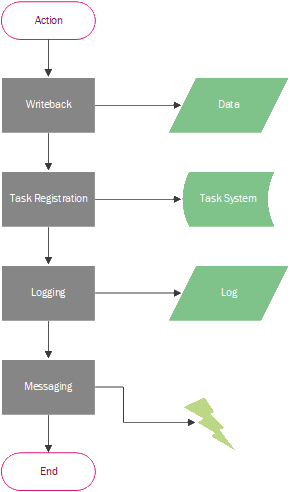Repetition is the only form of permanence that nature can achieve. — George Santayana
Process Automation is at the heart of modern business intelligence, automation is the most efficient way to collect the data required for business intelligence. The skills used to build the data collection process automation can also be used to build the automation requirements for Active Business Intelligence.
Active Business Intelligence is enabled by adding an Action to a Business Intelligence report, this captures the current context, the selected item. Triggering the action will post a payload to a webhook on the process automation platform which will initiate a process flow.
The Action triggered by Active Business Intelligence will orchestrate the process flow required to complete the Action typically these steps will include:
- Writeback
- Task registration
- Logging
- Messaging

This is the repeatable sequence of operations that is relevant to the Action.
Writeback, as the name implies, writes data to the source of the business intelligence report that triggered the insight. This is not necessarily tightly coupled to the source data but should include enough context so that it can be recognised that action has been taken. Report filtering will use the writeback to modify the report.
Task registration will generally be a shared process using a template so that tasks can be raised independently from the BI report. Tasks registration can produce feedback, such as if a task already exists for a context. This feedback is subsequently logged and if necessary and the notifications sent via messaging.
Logging is essential in the day-to-day operation of a business process. There are two aspects to this, being able to visually confirm that activity has taken place, whether expected or unexpected and consolidation of activity for performance reporting.